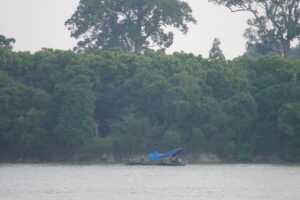Incubation
"A study of the inherent health risks of livelihoods in montane mainland Southeast Asia"
R4-5 1-5 (令和5年度 AY2023 継続)
| Project Leader | Tomita Shinsuke (Nagoya University , Asian Satellite Campuses Institute) |
| Collaborators | Sakamoto Ryota (Kyoto University, Center for Southeast Asian Studies) Umezaki Masahiro (The University of Tokyo , S School of International Health, Graduate School of Medicine,) Honda Masato (Kanazawa University, Institute of Nature and Environmental Technology) Hattori Hiroyuki (Nagoya University, Graduate School of Bioagricultural Sciences) Mizuno Yuki ( The University of Tokyo, School of International Health,Graduate School of Medicine) Kibe Mihoko ( The University of Tokyo, School of International Health,Graduate School of Medicine) |
| Research Project | A study of the inherent health risks of livelihoods in montane mainland Southeast Asia |
| Countries of Study | Laos |
Outline of Research
Previous studies have alleged that the padi or valley states in the lowlands exert political influence over upland communities because of their higher rice productivity and carrying capacity. Upland villages often do not have sufficient rice to survive. However, differences in agricultural productivity alone do not explain the health of local populations. Our research indicates that lowland people face greater health risks than their upland counterparts do. In our opinion, such health risks are inherent to livelihoods rather than a consequence of modernization. An analysis of the relationship between health, chemical substances, and trace elements related to ecological settings and livelihoods is presented in this study, which evaluates the health risks among people living in lowland and upland environments.
Purpose of Research, Its Significance and Expected Results, etc
“Wet rice farming has often been implicitly or explicitly regarded as the source of the political power of the chieftains of the region, not least because its higher agricultural productivity allows for the raising of a larger population than that of swidden farming, which upland people employ. The upland people had to be subordinate or try to escape authority. However, recent studies have shown that other relationships cannot be explained by agricultural productivity. Upland people have led, created, and protected padi states (Badenoch and Tomita 2013). In the Lan Xang kingdom, lowland and upland people build relationships through NTFPs trading (Masuhara 2011). Investigating the effect of chemicals and trace elements pertaining to livelihoods on health, this study rethinks the relationship between lowland and upland societies beyond the agricultural productivity-based discourse.
Mainland Southeast Asia has two common rice farming systems: wet rice farming in the lowlands and swidden rice farming in the uplands. In contrast to wet rice farming, swidden farming typically produces a lower rice yield. Hanks (1972) estimated that wet rice farming yields 1.5 times more rice than swidden rice farming. Owing to the lack of irrigation systems, the rice yield in swidden farming fluctuates significantly every year. People in the uplands often face rice shortages because of the lower productivity and instability of dry rice production.
Swidden farming systems pose greater health risks than wet rice farming. Burning trees is one of the sources of air pollution in Southeast Asia (e.g., Mostafanezhad, 2019). Small particles in the air easily bind to polycyclic aromatic hydrocarbons (PAHs), which are hazardous chemicals emitted from burning.
Malnutrition and exposure to noxious chemicals may increase the oxidative damage to cells, thereby increasing health risks. According to our study, lowland and upland residents did not differ significantly in height or BMI. Lower levels of oxidative stress were also observed in the upland areas.
A key question is why upland people have lower health risks than lowland people despite lower agricultural productivity and frequent exposure to noxious chemicals. Considering the influence of modernization, this study examines 1. Socioeconomic factors influencing health status; 2. Noxious chemicals and trace elements related to ecological settings and livelihoods; 3. Plausible factors that increase health risks among lowland people; and 4. Plausible factors that decrease health risks among upland Inhabitants.


